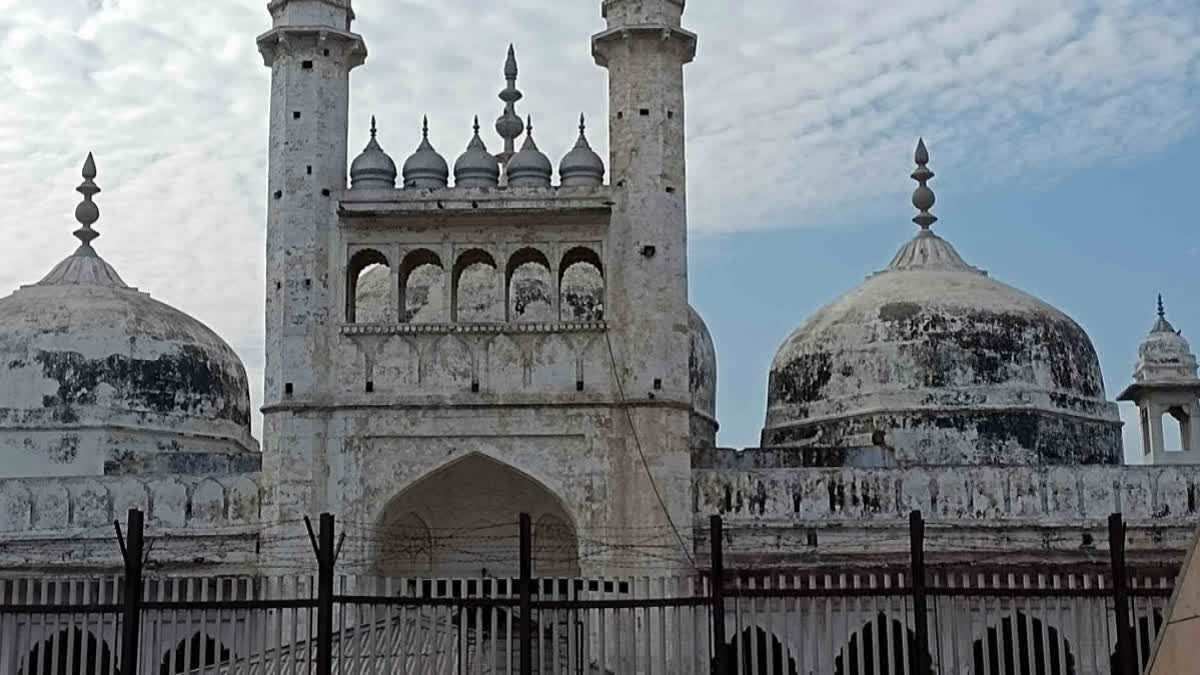Khandwa(Madhya Pradesh): Inspired by the carbon dating method successfully applied by the Archaeological Survey of India (ASI) to find the date of the dilapidated Mahadevgarh temple situated in Khandwa, Madhya Pradesh, the Varanasi court directed the premiere institute conduct a comprehensive scientific survey to investigate the claim of an ancient Shiva temple in Gyanvapi.
The order of the court came after Vishnushankar Jain, the counsel representing the petitioners in the Gyanvapi case, drew attention to the temple in Khandwa and presented all related court documents, questioning why the ASI confirmed the existence of a temple there but not in Gyanvapi. This tweet garnered widespread support.
The history of the Khandwa temple reveals that it was originally a grand Shiv temple dating back to the twelfth century. However, over time, it fell into disrepair and was eventually demolished, leaving only remnants of its former glory. The temple's ruins included a Shivling engraved in rock and exposed to the elements, with some locals even using the area as a stable for buffaloes. When concerns about the preservation of the Shivling arose, local Muslim leader Mohammad Liaquat Pawar filed a petition in the High Court, asserting that encroachment was occurring under the guise of the temple.
In response to the petition, the district administration commissioned a survey of the ancient temple, enlisting the expertise of the Archaeological Department. Dr. GP Pandey, Technical Assistant at the Office of the Deputy Director of Archaeology, Indore, conducted the investigation and submitted a report to the collector’s office on February 13, 2015. The report identified the Shivling of Kundleshwar Mahadev, located in Itwara market, as dating back to the twelfth century.
Also read: ASI's scientific survey of Varanasi Gyanvapi mosque complex begins amid high security
According to the Archaeological Department's report, the ancient temple held not only religious significance but also great archaeological importance. It contained remains from the twelfth and thirteenth centuries, including a Shivling housed in a sandstone reservoir within the sanctum sanctorum. While the temple's sole pillar had survived as a relic, parts of the Shivling had eroded over time. The temple itself had been constructed by carving ancient rocks near the Shivling.
Adjacent to the Shivling, there was a fragmented Nandi statue, adorned with bead garlands and bells on its neck, back, and buttocks, reminiscent of the artistic styles of the Paramarkal era.
In light of the Khandwa case and the compelling evidence presented in the Archaeological Department's report, the Varanasi court's decision to order a scientific survey of the Gyanvapi site was warranted. The Gyanvapi dispute revolved around the claim that a mosque was built on the site of an ancient Shiva temple, and this recent order would potentially shed light on the historical veracity of the claim.
The ASI, being the apex body for archaeological research in India, would carry out the survey with precision and diligence. The scientific investigation would likely involve a combination of archaeological excavations, geophysical surveys, and historical research to ascertain the presence of any ancient structures or artifacts beneath the site of the current mosque in Gyanvapi.



